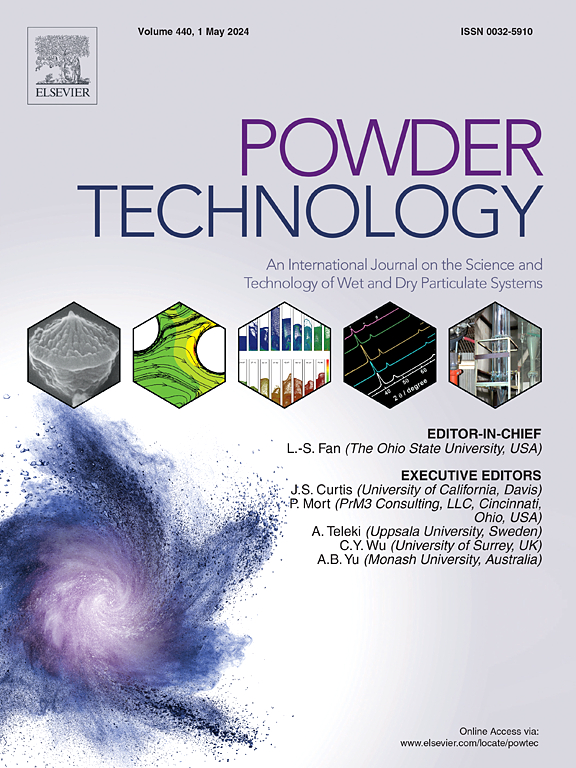Effects of wind velocity and cross spray on atomizing characteristics and dust removal efficiency of spray field
IF 4.5
2区 工程技术
Q2 ENGINEERING, CHEMICAL
引用次数: 0
Abstract
To improve the wind-resistant and capturing dust ability of a dust control spray, the influence of wind velocity and cross spray on the atomizing and dust control performances of spray field were investigated based on the self-constructed system. The results showed that the wind velocity had a certain weakening effect on the atomizing and dust suppression ability of a single spray, especially when the wind velocity exceeded 1.5 m/s, the condensation behavior between droplets increased and dust control efficiency decreased significantly. Meanwhile, the jet direction of a spray field was obviously deviated after 1.5 m/s, being harmful to the construction of a dust control spray. In contrast, cross spray could obviously enhance the wind-resistant ability of a dust control spray, while also enhancing coal dust control performance. For example, the cross spray formed by nozzles with a spacing of 10 cm had a 33.3 % increase in a critical wind velocity, from 1.5 m/s to 2.0 m/s; and showed a better atomizing and dust control characteristics than that of a single spray. Field application indicated that compared with that of the original spray, the newly constructed spray showed a better ability in controlling coal dust, of which control efficiency of total dust and respirable dust could be improved by 20.1 %, 24.4 %, reaching to 87.9 %, 83.8 %, respectively.

求助全文
约1分钟内获得全文
求助全文
来源期刊

Powder Technology
工程技术-工程:化工
CiteScore
9.90
自引率
15.40%
发文量
1047
审稿时长
46 days
期刊介绍:
Powder Technology is an International Journal on the Science and Technology of Wet and Dry Particulate Systems. Powder Technology publishes papers on all aspects of the formation of particles and their characterisation and on the study of systems containing particulate solids. No limitation is imposed on the size of the particles, which may range from nanometre scale, as in pigments or aerosols, to that of mined or quarried materials. The following list of topics is not intended to be comprehensive, but rather to indicate typical subjects which fall within the scope of the journal's interests:
Formation and synthesis of particles by precipitation and other methods.
Modification of particles by agglomeration, coating, comminution and attrition.
Characterisation of the size, shape, surface area, pore structure and strength of particles and agglomerates (including the origins and effects of inter particle forces).
Packing, failure, flow and permeability of assemblies of particles.
Particle-particle interactions and suspension rheology.
Handling and processing operations such as slurry flow, fluidization, pneumatic conveying.
Interactions between particles and their environment, including delivery of particulate products to the body.
Applications of particle technology in production of pharmaceuticals, chemicals, foods, pigments, structural, and functional materials and in environmental and energy related matters.
For materials-oriented contributions we are looking for articles revealing the effect of particle/powder characteristics (size, morphology and composition, in that order) on material performance or functionality and, ideally, comparison to any industrial standard.
 求助内容:
求助内容: 应助结果提醒方式:
应助结果提醒方式:


